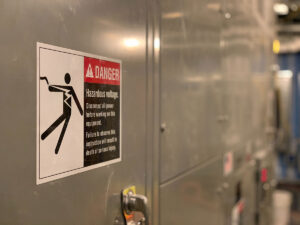The hazard communication standard (HCS) — (29 CFR 1910.1200) — is the second most commonly cited federal workplace health and safety standard, behind only fall protection (29 CFR 1926.501).
Between October 2018 and September 2019, the HCS was cited 4,102 times during 2,276 inspections with fines totaling more than $5 million.
What is the Hazard Communication Standard?
Under the HCS, employers and importers must follow a set of processes and procedures to classify which hazards go along with chemicals they handle.
Then, they must effectively communicate hazards associated with the chemicals during shipping, handling, and any form of exposure. Also, they must provide important information about them to workers through training and labeling.
Inspection Procedures for Hazard Communication
OSHA issued updated inspection procedures for the HCS on July 9, 2015.
Under this standard, employers must develop a written hazard communication program that covers all employees who may be exposed to hazardous substances. This must include procedures and information for labels and other warnings, safety data sheets (SDSs), and training used in the workplace.
Recent: 3 Effective Ways to Decontaminate N95 Masks for Reuse
During an inspection, the inspector will review the written program, and confirm that it contains a complete inventory of hazardous substances and methods for informing employees of these hazards.
All employees must be able to access the written program.
Labeling Hazards
Inspectors will check to see that the labeling section is: comprehensive; that it includes a description of the labeling system used; and, that the alternative methods used for workplace containers, an assigned person responsible for labeling, and procedures for reviewing and updating the labels in the workplace.
Safety Data Sheets
Safety data sheets are crucial to proper hazard communication.
These documents list information related to occupational safety and health for the use of different substances. SDSs catalog information on chemicals, chemical compounds, and chemical mixtures.
Inspectors will check to see who is assigned to the sheets, how they are maintained, and what the procedures are if an SDS is not received at the time of the first shipment.
Training
Documentation for the training aspects of the written program will also be reviewed.
Inspectors will check to see who is responsible for the training, and how it’s conducted. They’ll also review the procedures for training new employees and training employees on new hazards, as well as the training for multi-employer worksites.
In July 2019, OSHA cited a Strattanville, Pa. manufacturer for willful violations of the HCS. According to the agency, employees were exposed to carbon monoxide, combustible and explosive dust, isocyanates, liquid nails, kerosene, respirable dust, and wood dust without required training.
The manufacturer was fined $97,753.
Employers will be cited if they have an inadequate or incomplete hazard communication program that fails on any of the pillars of labeling, training, and SDSs.
***
About Worksite Medical
In most cases, OSHA requires medical surveillance testing, and at no cost to employees.
Worksite Medical makes that program easier with mobile medical testing.
We conduct on-site respirator fit tests (including N95 masks), as well as pulmonary function tests and heavy metal lab work, right on your job site. We also keep accurate, easy-to-access medical records for your convenience. You’ll keep your employees at work, and stay ahead of OSHA inspections.
With Worksite Medical, a mobile medical testing unit — we can bring all the resources of a lab to you. Our certified lab technicians can perform both qualitative and quantitative respirator tests to ensure a perfect fit.
Protect your team and your workplace now with Worksite Medical. Not sure what you need? Try our medical testing wizard here.
Give us a call at 1-844-622-8633, or complete the form below to schedule an on-site visit or to get your free quote!




